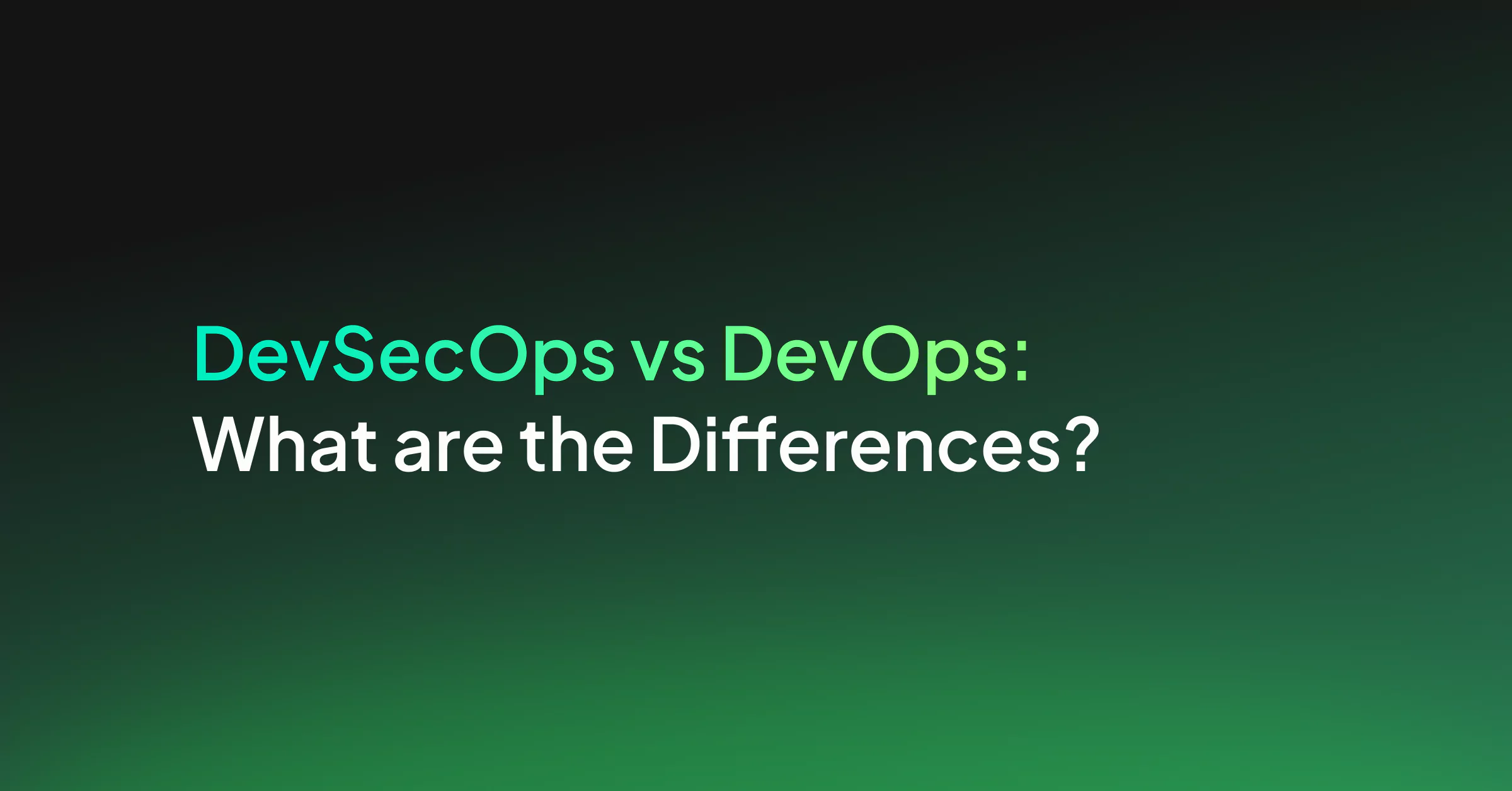The modern technology landscape is ever-changing, with an increasing focus on methodologies and practices. Recently we’re seeing a clash between two of the newer and most popular players: DevOps vs DevSecOps. With new methodologies come new mindsets, approaches, and a change in how organizations run.
What’s key for you to know, however, is, are they different? If so, how are they different? And, perhaps most importantly, what does this mean for you and your development team?
In this piece, we’ll examine the two methodologies and quantify their impact on your engineers.
DevOps: Head in the Clouds
DevOps, the synergizing of Development and Operations, has been around for a few years. Adoption of DevOps principles has been common across organizations large and small, with elite performance through DevOps practices up 20%.
The technology industry is rife with buzzwords, and saying that you ‘do DevOps’ is not enough. It’s key to truly understand the principles of DevOps.
The Principles of DevOps
Development + Operations = DevOps.
There are widely accepted core principles to ensure a successful DevOps practice. In short, these are: fast and incremental releases, automation (the big one), pipeline building, continuous integration, continuous delivery, continuous monitoring, sharing feedback, version control, and collaboration.
If we remove the “soft” principles, we’re left with some central themes. Namely, speed and continuity achieved by automation and monitoring. Many DevOps transformation projects have failed because of poor collaboration or feedback sharing. If your team can’t automate everything and monitor effectively, it ain’t DevOps.
The Pitfalls of DevOps
As above, having the right people with the right hard and soft skills are key for DevOps success. Many organizations have made the mistake of simply rebadging a department, or sending all of their developers on an AWS course and all their infrastructure engineers on a Java course. This doesn’t work – colocation and constant communication (either in person, via Slack or Trello) are the first enablers in breaking down silos and enabling collaboration.
Not only will this help your staff cross-pollinate their expertise, saving on your training budget, but it enables the organic and seamless workflow. No two organizations or tech teams are the same, so no “one size fits all” approach can be successfully applied.
DevSecOps: The New Kid On The Block
Some people will tell you that they have been doing DevSecOps for years, and they might be telling the truth. However, DevSecOps as a formal and recognized doctrine is still in its relative infancy. If DevOps is the merging of Development and Operations, then DevSecOps is the meeting of Development, Security, and Operations.
Like we saw with DevOps adoption, it’s not just as simple as sending all your DevOps engineers on a security course. DevSecOps is more about the knowledge exchange between DevOps and Security, and how Security can permeate the DevOps process.
When executed properly, the “Sec” shouldn’t be an additional consideration, because it is part of each and every aspect of the pipeline.
What’s all the fuss with DevSecOps?
The industry is trending towards DevSecOps, as security dominates the agenda of every board meeting of every big business. With the average cost of a data breach at $3.86 million, it’s no wonder that organizations are looking for ways to incorporate security at every level of their technology stack.
You might integrate OWASP vulnerability scanning into your build tools, use Istio for application and container-level security and alerting, or just enforce the use of Infrastructure as Code across the board to stamp out human error.
However, DevSecOps isn’t just about baking Security into the DevOps process. By shifting security left in the process, you can avoid compliance hurdles at the end of the pipeline. This ultimately allows you to ship faster. You also minimize the amount of rapid patching you have to do post-release, because your software is secure by design.
As pointed out earlier, DevOps is already a successful methodology. Is it too much of a leap to enhance this already intimidating concept with security as well?
DevOps vs DevSecOps: The Gloves Are Off
What is the difference between DevOps and DevSecOps? The simple truth is that in the battle royale of DevOps vs DevSecOps, the latter, newer, more secure contender wins. Not only does it make security more policy-driven, more agile, and more enveloping, it also bridges organizational silos that are harmful to your overall SDLC.
The key to getting DevSecOps right lies in two simple principles – automate everything and have omnipotent monitoring and alerting. The reason for this is simple – automation works well when it’s well-constructed, but it still relies on a trigger or preceding action to prompt that next function.
Every single one of TechBeacon’s 6 DevSecOps best practices relies on solid monitoring and alerting – doesn’t that say a lot?
Coralogix: Who You Want In Your Corner
Engineered to support DevSecOps best practices, Coralogix is the ideal partner for helping you put security at the center of everything.
Alerts API allows you to feed ML-driven DevOps alerts straight into your workflows, enabling you to automate more efficient responses and even detect nefarious activity faster. Easy to query log data combined with automated benchmark reports ensure you’re always on top of your system health. Automated Threat Detection turns your web logs into part of your security stack.
With battle-tested software and a team of experts servicing some of the largest companies in the world, you can rely on Coralogix to keep your guard up.


